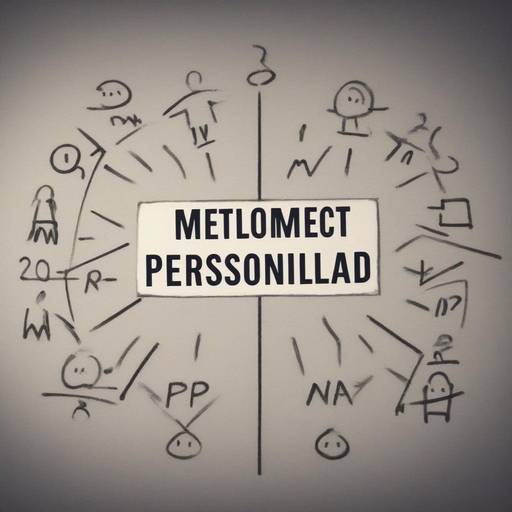
Introduction
Depletion, also known as "burnout", is a common phenomenon in today's society that affects many people. Recognizing early signs of exhaustion is essential to preserving emotional health and well-being. In this article, we will explore in detail how to identify these signs, understanding the concept of exhaustion and its impact on emotional well-being. We will also provide practical advice to prevent and manage exhaustion. Keep reading to find out more!
History and background
The term "burnout" was coined by psychologist Herbert Freudenberger in the 1970s to describe the phenomenon of exhaustion in working environments. Since then, the study of this concept has evolved significantly, extending to other areas of life, including the personal and family environment. Depletion is common in people who experience chronic stress and constant pressure, which can lead to emotional, mental and physical exhaustion.
Depletion not only affects the individual level, it also has consequences in the areas of labour, social and health. It is therefore crucial to understand its impact and to learn to identify early signs to prevent its development.
In-depth analysis
Depletion has a number of signs and symptoms that can manifest in different ways in people. These include persistent fatigue, demotivation, lack of concentration, irritability, problems to reconcile sleep, among others. It is essential to be attentive to these indications in order to intervene on time.
In addition, it is important to analyze the triggering factors of exhaustion, ranging from overload to traumatic experiences or situations of constant conflict. Recognizing these causes is essential to effectively address exhaustion.
Comprehensive review
To prevent exhaustion, it is necessary to foster a healthy working environment, promote the balance between working and personal life, and foster open communication on emotional well-being. Organizations that prioritize the mental health of their employees often implement support programs, labor flexibility and resources to manage stress, which helps reduce the risk of exhaustion.
Emotional self-consciousness and the practice of stress management techniques are key tools to prevent exhaustion. Learning to set limits, prioritize self-care and seek support when necessary are practices that can help maintain a healthy emotional balance.
Comparative analysis
It is important to differentiate between signs of exhaustion, the concept of burnout and emotional well-being. While exhaustion refers to a state of extreme physical, mental or emotional fatigue, emotional well-being relates to the ability to handle the demands of daily life positively and productively. Understanding these differences is essential to addressing each aspect in an appropriate manner.
Practical advice and actionable advice
In order to prevent exhaustion, it is essential to establish clear limits, both in the workplace and in the workforce. Learning to delegate tasks, disconnect from work in moments of rest and practice activities that generate emotional well-being, such as exercise, meditation or quality time with loved ones, are effective practices to maintain a healthy balance.
Industry perspectives and expert opinions
Experts agree that exhaustion is a growing problem in today's society, and its impact can be devastating both individually and collectively. Promoting education on exhaustion, implementing policies that promote emotional well-being and allocate resources for mental health are fundamental aspects that need to be addressed today.
Case studies and applications in real life
Numerous cases have been documented that exemplify the consequences of exhaustion in different areas, from professional wear in the health sector to the impact of labour stress on corporate productivity. These cases provide a deeper understanding of the implications of exhaustion and the importance of proactively addressing it.
Future trends and predictions
As awareness of exhaustion and emotional well-being continues to grow, more initiatives are expected to be implemented to address this problem. There is a greater emphasis on the prevention of exhaustion, as well as a change in the labour culture towards a more balanced and understanding approach to the emotional well-being of employees.
Conclusion
In conclusion, identifying early signs of exhaustion is key to preserving emotional health and well-being. Depletion not only affects the individual level, but also has consequences in the areas of labour, social and health. By understanding their signs, triggers and prevention strategies, we can work towards a healthier and more balanced environment for all.
Frequently asked questions
**What are the early signs of exhaustion?**Depletion can be manifested through persistent fatigue, demotivation, irritability, problems to reconcile sleep and lack of concentration, among others.
**What is the difference between exhaustion and emotional well-being?**While exhaustion refers to a state of extreme physical, mental or emotional fatigue, emotional well-being relates to the ability to handle the demands of daily life positively and productively.
**How to prevent exhaustion?**Establish clear limits, practice stress management techniques, prioritize self-care and seek support when necessary are effective practices to prevent exhaustion.
**What is the impact of exhaustion on the labour market?**Depletion can lead to reduced productivity, absenteeism, interpersonal conflicts and negatively affect the working climate.
**Why is it important to address exhaustion in today's society?**Depletion has significant consequences both individually and collectively, so it is crucial to implement measures to prevent and promote emotional well-being.
**What initiatives are being implemented to address exhaustion?**More and more organizations are prioritizing the emotional well-being of their employees, implementing support programs, labor flexibility and resources to manage stress.
By following these tips and being attentive to signs of exhaustion, we can contribute to the creation of healthier and more balanced environments, both on a personal and collective level.






















































